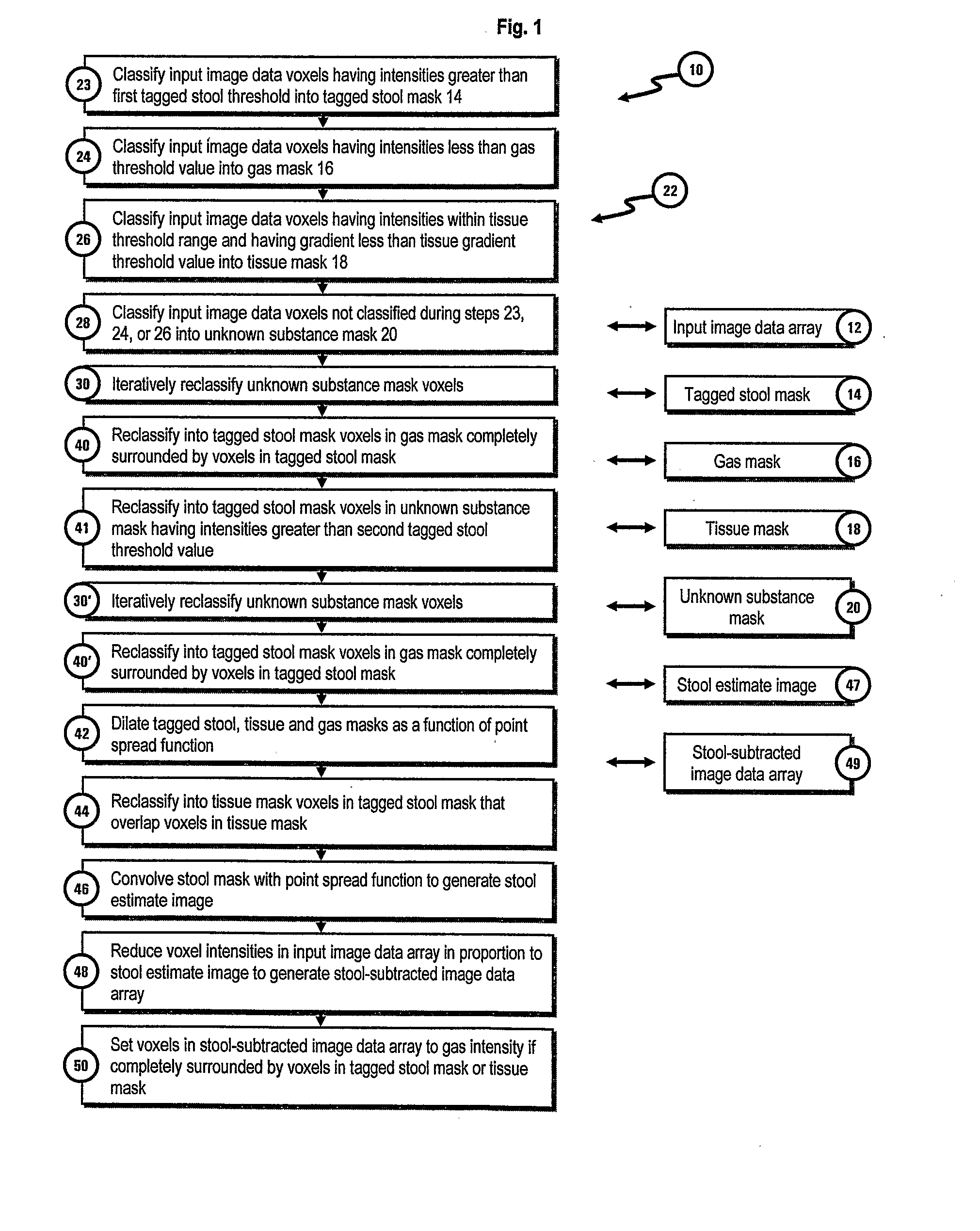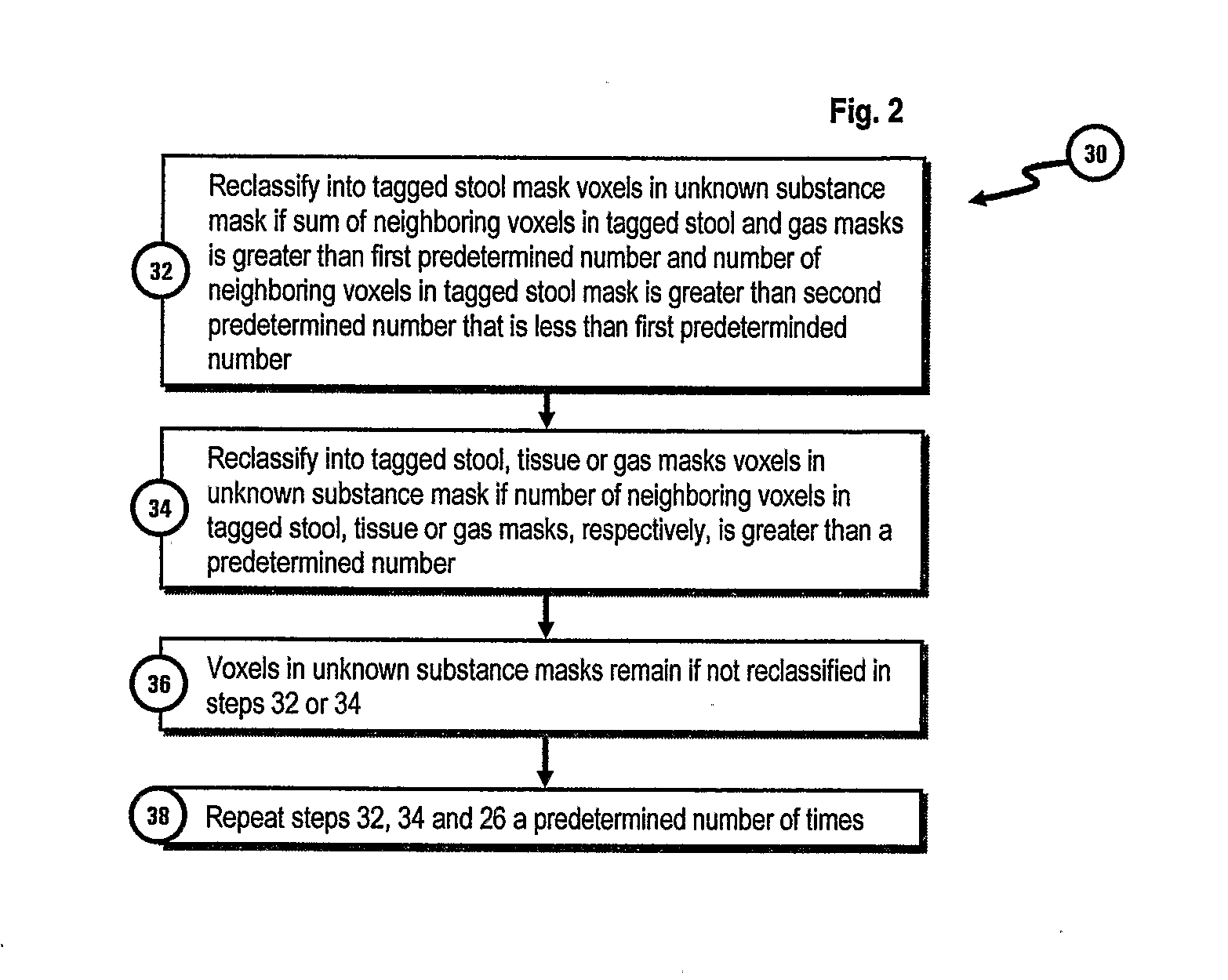Electronic Stool Subtraction in Ct Colonography
a technology of ct colonography and electronic stools, which is applied in the field of ct colonography, can solve the problems of reducing the efficacy of diagnostic procedures, time-consuming and uncomfortable patient preparation processes, and patients may forego diagnostic procedures altogether, and achieves the effect of accurate and efficient method of implementation
- Summary
- Abstract
- Description
- Claims
- Application Information
AI Technical Summary
Benefits of technology
Problems solved by technology
Method used
Image
Examples
Embodiment Construction
[0018]FIG. 1 is a flow diagram illustrating the electronic stool subtraction method 10 of the present invention. The data processing operations of method 10 can be performed by a conventional computer system (not shown). The method is performed on an array of input image data 12 representative of a 3-dimensional image of a colon. Input image data array 12 includes data representative of the intensity of the image at each location or voxel in the image. In one embodiment of the invention the voxel data uses the Houndsfield scale to represent the range of voxel intensities. On the Houndsfield scale a value of −1000 houndsfield units (HU) is used to represent the density of air and a value of 0 HU is used to represent water. Bone will generally have densities corresponding to between 500 and 1000 HU.
[0019]Conventional low dose (e.g., 50 mAs) CT colonography was performed with 1.25 mm collimation and 1.25 mm reconstruction intervals to generate the image data array 12 used to develop th...
PUM
 Login to View More
Login to View More Abstract
Description
Claims
Application Information
 Login to View More
Login to View More - R&D
- Intellectual Property
- Life Sciences
- Materials
- Tech Scout
- Unparalleled Data Quality
- Higher Quality Content
- 60% Fewer Hallucinations
Browse by: Latest US Patents, China's latest patents, Technical Efficacy Thesaurus, Application Domain, Technology Topic, Popular Technical Reports.
© 2025 PatSnap. All rights reserved.Legal|Privacy policy|Modern Slavery Act Transparency Statement|Sitemap|About US| Contact US: help@patsnap.com



